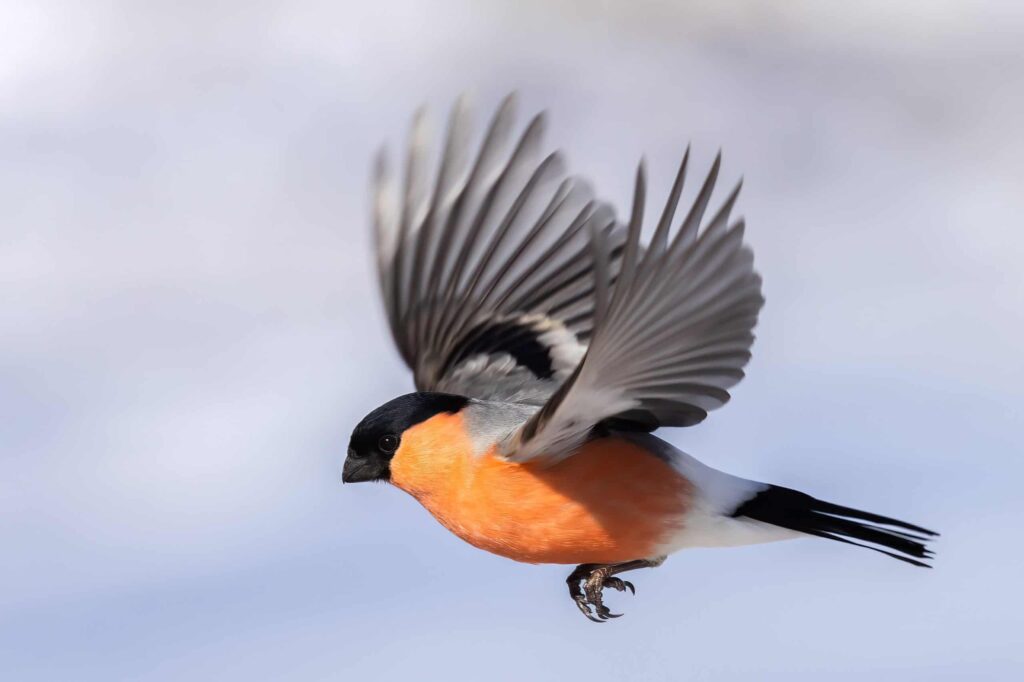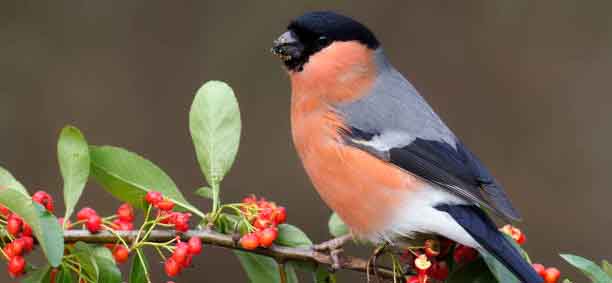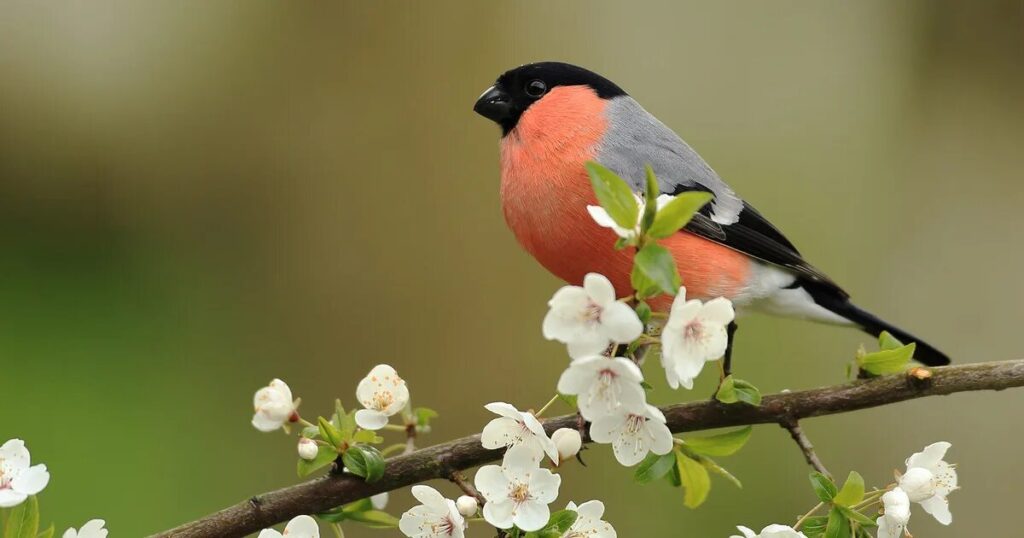Description
The Eurasian bullfinch, also known as the common bullfinch, is a small passerine bird in the finch family, Fringillidae. It is found across Europe and Asia, from the British Isles to Japan. The male bullfinch is easily recognizable by its striking plumage, with a bright red breast and cheeks, a black cap, and a grey back. The female is similar in appearance but has a more subdued coloration, with a pinkish-red breast and cheeks.
The Bullfinch Diet
The bullfinch is a shy and elusive bird, often found in dense woodlands, particularly in areas with plenty of shrubs and undergrowth. It is a sedentary species, meaning that it does not migrate, and can be found in its breeding range year-round. The bullfinch is primarily a seed-eater, feeding on a variety of seeds and berries, particularly in the winter months when other food sources are scarce. It has a strong, conical beak that is well-suited for cracking open tough seeds, and it is also known to feed on buds and young shoots.
During the its Breeding Season
During the breeding season, which typically begins in late April, the male bullfinch becomes more vocal, singing a soft, melodious song from a high perch in the treetops. The female builds a cup-shaped nest


out of twigs, moss, and lichen, usually in a dense thicket or shrub. She lays a clutch of 4-5 pale blue eggs, which she incubates for around 12-14 days. Both parents take turns feeding the chicks, which fledge after 14-16 days.

A Monogamous Species
The bullfinch is a monogamous species, with pairs forming strong bonds that can last for many years. They are also highly territorial during the breeding season, defending their nesting area from other bullfinches and potential predators. Despite their shy nature, bullfinches are known to be quite aggressive when it comes to defending their territory, and will often chase away larger birds such as crows and magpies.
Faces Decline Due to Habitat Loss
In recent years, the Eurasian bullfinch has faced declines in some parts of its range, particularly in Western Europe. This is thought to be due to habitat loss, as well as changes in land management practices that have led to a reduction in the availability of suitable nesting sites and food sources. Conservation efforts are underway to protect the remaining populations of bullfinches, including the creation of wildlife corridors and the restoration of woodland habitats.

An Important Part of the Ecosystem
In conclusion, the Eurasian bullfinch is a beautiful and charismatic bird that is an important part of the ecosystems in which it lives. Its striking plumage and melodious song make it a popular species among birdwatchers, and efforts to conserve its populations are essential to ensure that future generations can continue to enjoy the sight and sound of this wonderful bird.



interessant